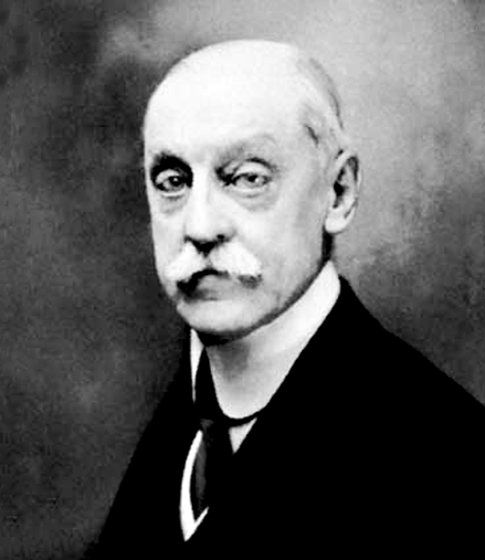
Sir Robert Hadfield
AIME Honorary Membership in
1906
Robert Abbott Hadfield was born on 28th November 1858 in the district of Attercliffe (Sheffield).
Robert was educated in Sheffield and was taught chemistry by the famous chemist William Baker. He refused to go to either Oxford or Cambridge, preferring to serve his apprenticeship with the local steelmakers, Jonas and Colver. His interest in chemistry continued under the guidance of Mr. A. H. Allen, a leading analyst. He persuaded his father to allow him to set up his own melting furnace in the cellar of their family home.
In 1878, Robert visited the Paris Exhibition where he was introduced to the researches of the Terre Noire Company. Robert translated the company's pamphlet and discovered the benefits of their experiments with adding small quantities of manganese to steel. Robert set up his own experiments when he returned to Sheffield using both manganese and silicon.
In 1882 Robert discovered Manganese steel, which was hardened by quenching it in water from a temperature of a thousand degrees centigrade. The hard steel was to be used in the manufacture of tram wheels. He patented his work in 1883-4 but continued to carry out further experiments before publicizing his findings in 1888, which were supported by a lecture tour.
Robert Hadfield (senior) died in 1888 and Robert Hadfield (junior) immediately made the firm a limited company, Hadfield's Steel Foundry Co. Ltd. He removed half of his father's workforce, replaced them with his own men and took over the position of chairman.
Although a hard task master Robert Hadfield was one of the first employers to introduce the eight hour day in 1891 and co- wrote a book on the subject The Shorter Working day.
From 1909-11 he went on a world tour and on his return he made his home Carlton House Terrace, London, wintering in the South of France. He kept his house, Parkhead, in Sheffield.
In 1921 Robert Hadfield suffered a serious illness which required extensive surgery, from this point on his co-directors took over the main running if the firm. The 1920's brought problems for Hadfield's, there was a slump in orders, especially for weapons, there were strikes amongst the workforce and the American based firm in Ohio, purchased by Robert Hadfield, went bankrupt in 1927. The firm bought Harper Bean, a Dudley based car firm in 1926, which also failed to bring the expected profits and this was sold in 1936.
Although a hard task master Robert Hadfield was one of the first employers to introduce the eight hour day in 1891 and co- wrote a book on the subject The Shorter Working day .
From 1909-11 he went on a world tour and on his return he made his home Carlton House Terrace, London, wintering in the South of France. He kept his house, Parkhead, in Sheffield.
In 1921 Robert Hadfield suffered a serious illness which required extensive surgery, from this point on his co-directors took over the main running if the firm. He still attended the annual board meetings and kept in touch by telegrams and telephone. The 1920's brought problems for Hadfield's, there was a slump in orders, especially for weapons, there were strikes amongst the workforce and the American based firm in Ohio, purchased by Robert Hadfield, went bankrupt in 1927. The firm bought Harper Bean, a Dudley based car firm in 1926, which also failed to bring the expected profits and this was sold in 1936.
During this time Robert Hadfield's personal reputation as a leading metallurgist grew. He published over 200 papers and embarked on an extensive lecture tour both at home and abroad. Robert Hadfield always took the opportunity to highlight both the unique place that Sheffield occupied in relation to world steelmaking and his own personal contribution to the modern age of alloy steels.
Robert Hadfield’s honours and achievements include; 1899 Hadfield was made Master Cutler, 1908 Hadfield was knighted, 1908 he was appointed President of the Faraday Society and the Iron and Steel Institute, 1909 he was elected a Fellow of the Royal Society, 1917 Sir Robert Hadfield was made a baronet and given the freedom of the city of London, 1925 he was made an Officer of the Legion d'Honneur, 1938 he became the benefactor of the Sir Robert Hadfield Metallurgical Laboratories, 1939 Received the Freedom of the City of Sheffield.

